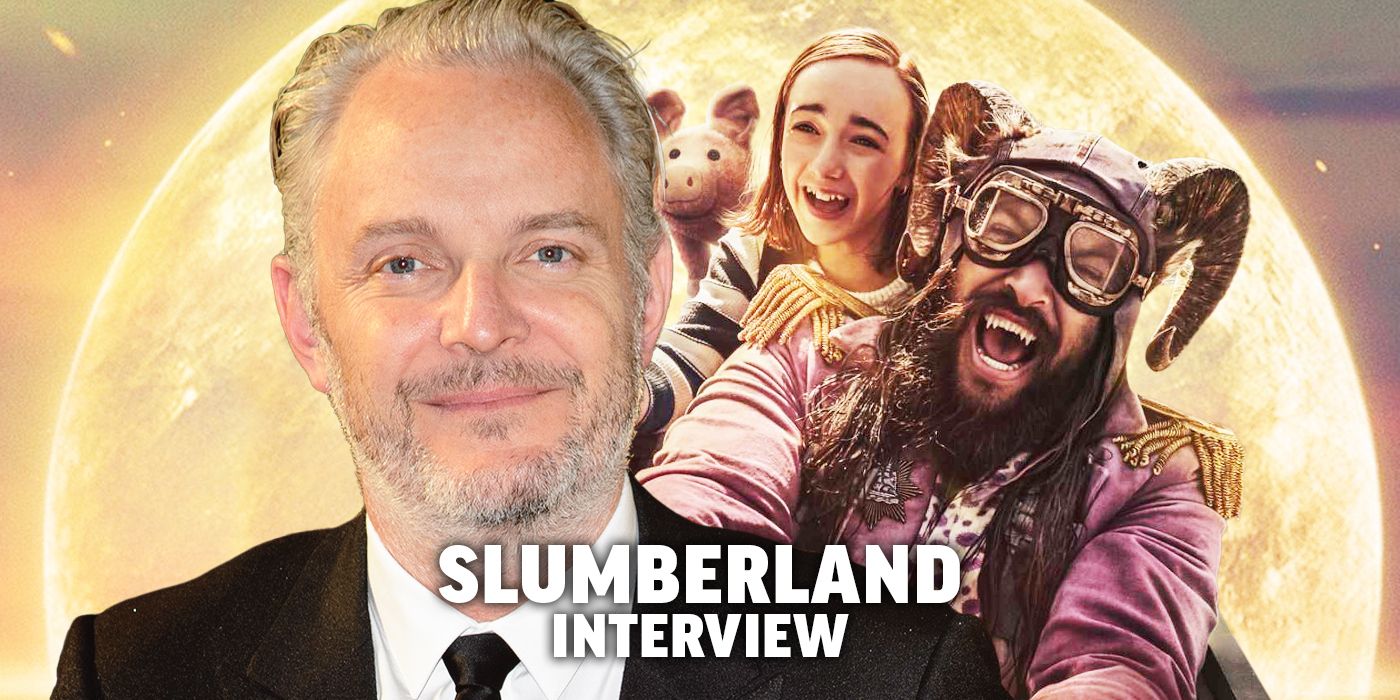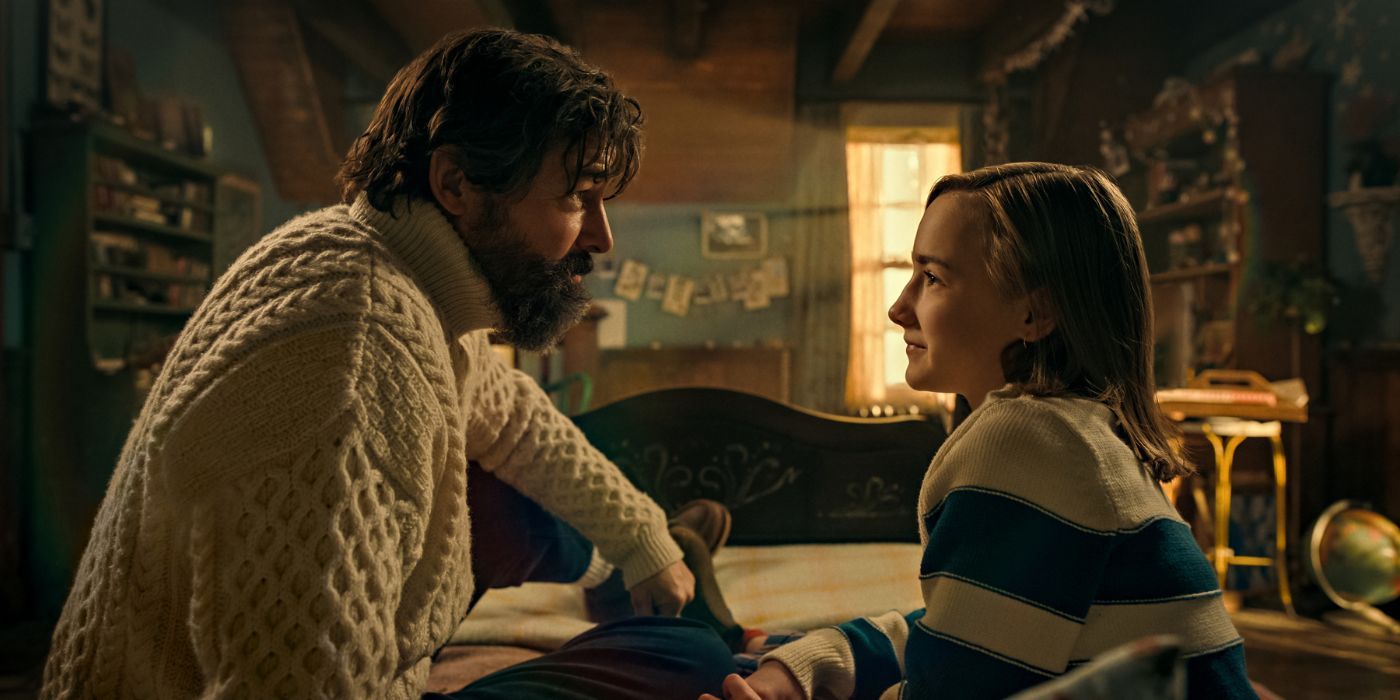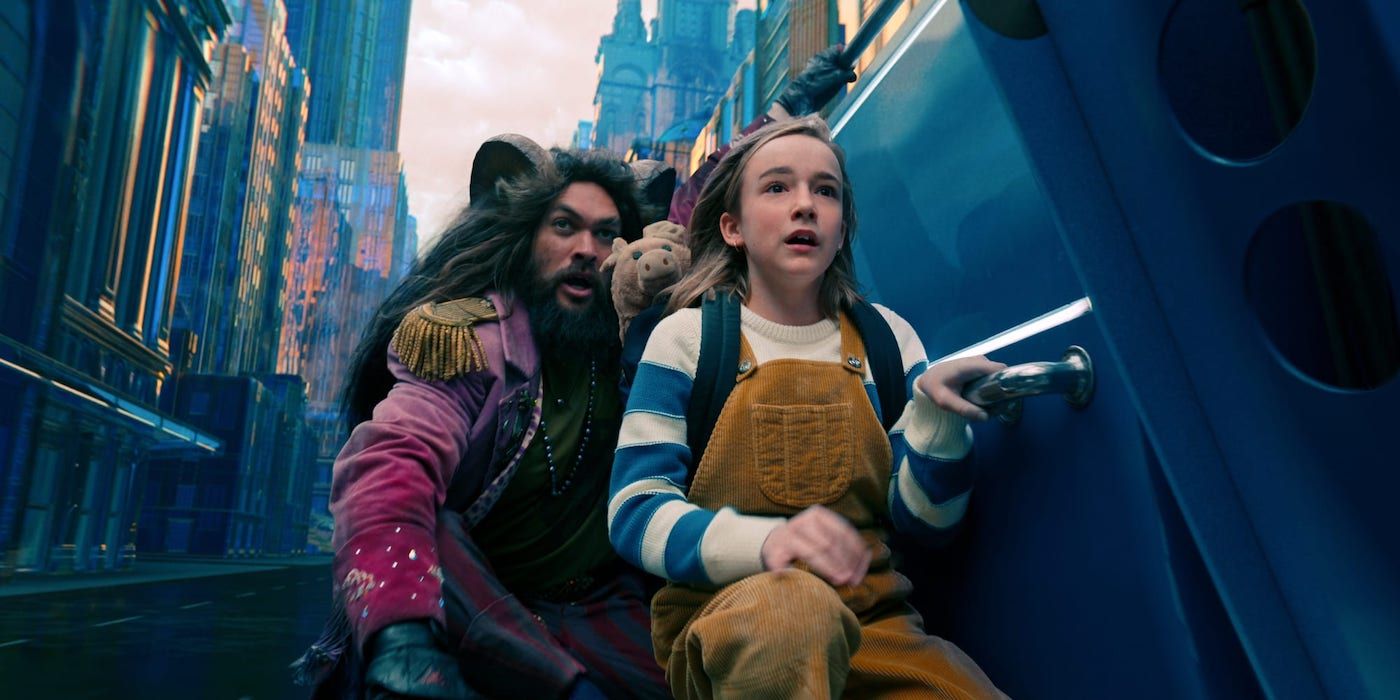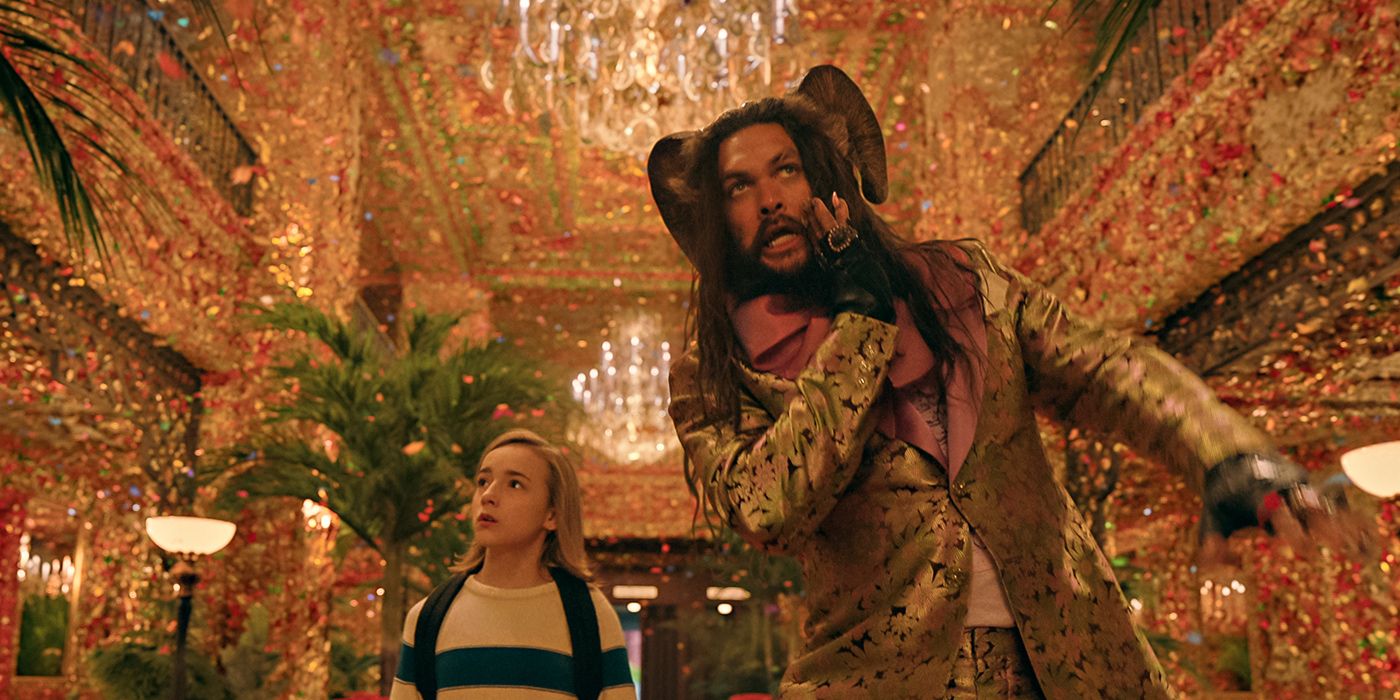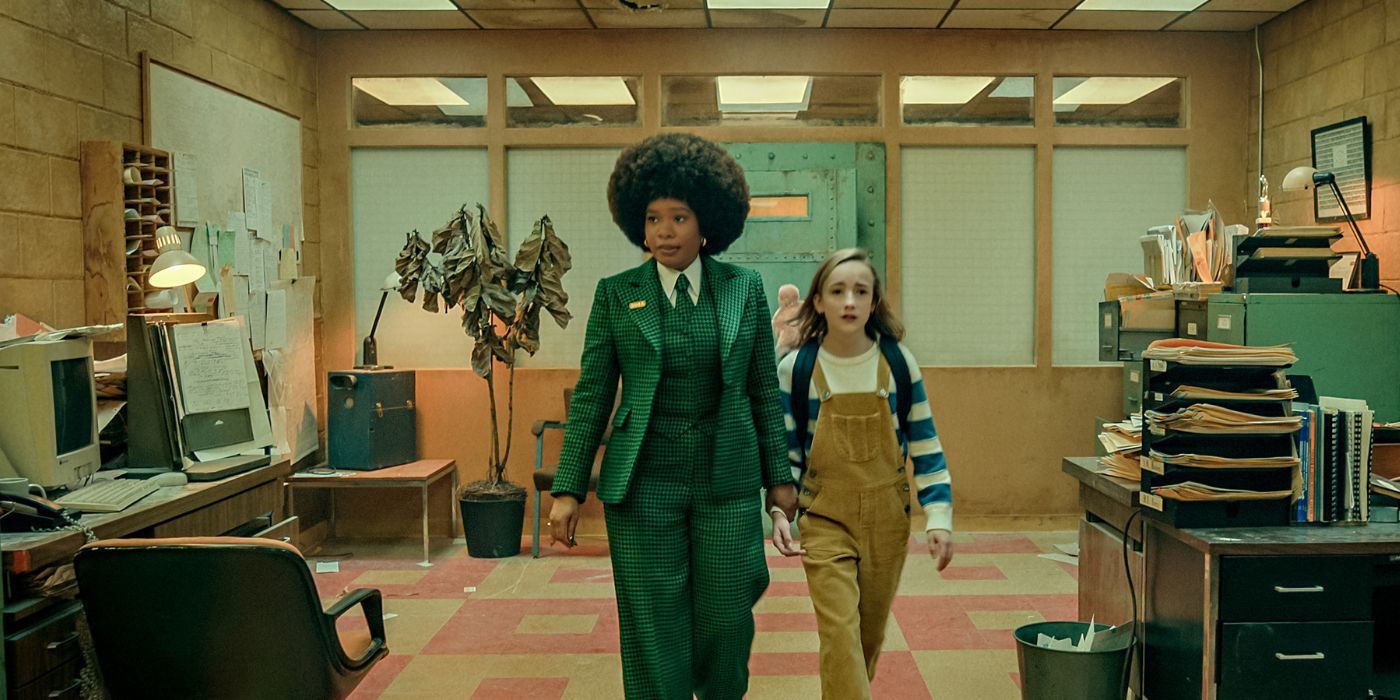In director Francis Lawrence's newest feature for Netflix, Slumberland, a young girl named Nemo (Marlow Barkley) is introduced to a magical world that exists only in dreams. Having recently lost her father, Nemo's life is turned upside down when she's sent to live with her uncle (Chris O'Dowd), and she finds herself retreating into the mysterious Slumberland. When an old friend of her father's, Flip (played by Jason Momoa), offers to be Nemo's guide, he reveals to her a treasure that will grant the finder any wish, prompting Nemo to stop at nothing to see her father one more time.
In his interview with Collider's Editor-in-Chief, Steve Weintraub, Lawrence explains how he went from Apple TV+'s action sci-fi series See to doing Slumberland for Netflix, how he and Momoa crafted the character of Flip, and everything that transpired to land Barkley in the lead role. The director also talks about using nearly every scene filmed, and shares the process of designing the dreams within Slumberland. Check out what he had to say below.
COLLIDER: How did this project actually happen? Talk a little bit about the genesis and how it ended up at Netflix.
FRANCIS LAWRENCE: Okay. Well, how it happened for me was there was a string of projects that I was doing with The Chernin Group. So I did Red Sparrow with them, and they sort of inherited me. I sort of inherited them because I was actually given that project by Fox, but I really enjoyed working with them. While we were testing that, they brought me See. I went right into See. While I was doing See with Jason [Momoa], they brought me their early version of a Slumberland script.
So they had gotten the idea, started to develop it, liked it, thought I might like it, which I did. So I started to develop it, but I was doing See, and that's when I met Jason. And so I thought, "You know what, Jason actually would be perfect as Flip because I think he, in real life, has a lot of the qualities of Flip." I asked him to do it, he said he was interested, but at the time, Slumberland was at Fox because the Chernin deal was at Fox. This was before Fox got bought by Disney, and it was with the exec, Kira Goldberg.
Right around the time we got to the place with the script that we liked, we had Jason, we had me, we had a temporary budget, and then Fox got bought by Disney. Then it became very clear that Disney wasn't going to let Fox make a family movie like this because that's sort of their territory. Luckily, The Chernin Group had this ticking clock deal on their projects, that if they have a star, they have a director, they've got a budget, and a shooting script, they could get it pulled out within 30 days unless Fox goes into production on it.
So we ended up pulling it out. Then Kira, who was our exec, had left because of the sale to Disney, and she had gone to Netflix. We went right to Kira at Netflix, and she's like, "Yes, please," and Netflix took it on, and then we started going for it. We started a soft prep on it, but then the pandemic hit. Luckily, Netflix let us continue a virtual soft prep in terms of researching how to do the visual effects and keeping the designer on, and illustrators, and all that kind of stuff.
One of the things I was watching, and maybe I'm wrong about this, but do you feel like Jason was channeling a little bit of Michael Keaton and Beetlejuice into Flip?
LAWRENCE: I don't think so. We never really referenced him. I talked a lot about just Jason as a person, and we went through and talked a lot about other mischievous, irreverent kinds of characters and things. We really tried to find his own physicality and his own design and came up with reasons why he looks a certain way and is a certain way, based on who his alter ego is in the real world, and all that kind of stuff. So I don't think so. That would be more of a question for him, but we certainly didn't talk about it.
Not overt, but when I was watching it, I felt a little bit of DNA, but maybe I'm wrong.
LAWRENCE: No, look, I can totally see it. All I know is that we weren't aiming for that specifically. Is there probably somewhere, even in me growing up watching Beetlejuice? Sure. I'd say there's probably a little Jack Sparrow in there, too. Again, we weren't aiming for Jack Sparrow, but when you get into the world of those kinds of irreverent, comical, mischievous sort of characters.
Talk a little bit about casting Marlow [Barkley] because this movie doesn't work without her, and she's really good in the movie.
LAWRENCE: Yeah. I had sort of forgotten about this, but she was weirdly a lucky event caused by COVID. Because prior to the pandemic, when we were casting, she was unavailable because there was a TV show that she was in. So she wasn't available, so she wasn't presented to us at all. There was a minute where it felt like we were actually going to use Brooklynn Prince from Florida Project. She came in, and she's really talented, and I like her a lot. And then when the pandemic hit, all of a sudden, Brooklynn fell out. Because when we were going to start shooting Slumberland, her Apple TV show was going to go. So she became unavailable, and then I was like, "Oh my God, we're going to have to start over again. What are we going to do?"
Weirdly, Marlow's show stopped, and Marlow became available. So she was one of the new batch of people that came in, and she was kind of like, by far, the best and most interesting, and unique, and talented of the new group. So we tested her Jason on Zoom, and they were fantastic together, and just went from there.
When someone walks in the room with you, or on Zoom when you're first watching, can you tell within the first five seconds if this person is right? Or does it really take the full audition to see everything? Do you get a gut feeling right off the bat?
LAWRENCE: I mean, I can tell you it takes about five seconds before I know somebody's wrong. It doesn't even mean you're bad, but just wrong. So you can quickly click through next, next, next, next. Then you start to get into the people that are sort of interesting, and you kind of winnow it down into smaller groups.
There are sometimes when you just get somebody that is so clearly fantastic, then it's really easy. It gets harder when people are good, and you're in that zone of, "Oh yeah, they could do it, and they're good, but is that the best we can find?" Occasionally, you instantly are just like, "Oh my God, holy shit, this person's amazing."
Is there any advice you want give to actors? Because you obviously watch a lot of Zoom interviews, or meet a lot of people. Is there anything you want to give as advice for people to just not do at the beginning of an audition?
LAWRENCE: The only thing that I would say that really blows it, especially when they're self-tapes, is when people go overboard with trying to add some kind of production value with costumes, or going to crazy environments, or bringing their friends in and dressing their friends up and doing stuff. When they go over the top that way, I'd say that's usually a recipe for disaster.
The truth is, I would just say my biggest advice is not to take anything personally. Most of the time, by the time a tape gets to me, you're not bad. That's why you shouldn't take it personally. It's just that usually you're just not right for the part. That could just be my personal taste, or what I'm thinking is for the role, but that doesn't mean that you're bad or that you messed up.
No, that actually makes a lot of sense. How did this film change in the editing room in ways you didn't expect, or not at all?
LAWRENCE: I'm trying to think. For the most part, we used almost every scene that we shot. It's always a goal of mine because I hate the feeling - this happened to me on I Am Legend where we shot for 95 days, and then we cut 45 minutes out of the movie. Then I go, "Okay. Well, there was 10 or 12 days worth of work that we just never needed to do, or that could have been money spent on the portions of the movie that we used."
I will say for the most part, we used almost every scene we shot. [There are] a couple little moments and things like that, but I will say in terms of the structure of the movie, it kind of is what was scripted. So it wasn't really surprising. We spent most of our time cutting for pace, length of the movie, and I will say for comedy. Other than that, that was really it. Most of our editing was finding the right tone, especially with Jason's character.
There's a line in the movie that I laughed so hard on, and I don't know if you're going to know it. It's when Marlow's in bed, trying to fall asleep.
LAWRENCE: "Dammit, this is interesting."
"Dammit, this is interesting." So I'm just curious how that scene came about because it's really funny.
LAWRENCE: It was an original. It's funny, because in all our test screenings, that gets the biggest laugh. That moment gets the biggest laugh. [There are] a lot of laughs in the movie, but that one gets the biggest laugh in the movie. It was a scripted moment that the writers, David [Guion] and Michael [Handelman], wrote very early on, which weirdly didn't read nearly as funny as, somehow, it plays.
It's one of the things that I've learned now, messing around with comedy for the first time, is you can do stuff, and you can be dying on set. You think it's so funny. Then you put it in the movie, and you don't even get a chuckle from anybody. Then there's stuff like that, "Dammit, this is interesting," which I always thought was enjoyable, but was never a laugh-out-loud moment, and now gets the biggest laugh in the entire movie. You're like, "Okay, whatever." It's the magic of humor.
I laughed out loud watching that scene. It's very good. The other thing is, there's a lot of stuff in the dream world. When you are designing a dream, you can literally do anything. So, can you talk about how you wanted to bring these different dreams to life and the challenges, as we talked a little bit about, with the VFX industry that you might want to do this, but there's no artist to do it?
LAWRENCE: Well, I definitely knew that the problem of creating dream worlds was that you could do whatever you want wanted. So very early on, and this was in the script development process, I started to realize that we needed parameters.
When we were coming up with the dreams, which we had the sort of bones of pretty early in the script process, I started to realize, "We need to really figure out who these characters are of the dreamers. Who are the dreamers, why are they dreaming these certain things? What are the narratives behind the dreams?" That has to be the thing that drives what the dreams look like and feel like, because otherwise you just get into this kind of acid trip, Alice in Wonderland. You just have giant mushrooms everywhere, whatever. It just felt too random, and I needed something, some set of rules, to be the building blocks for why the dreams are the way they are, and why they feel a certain way. Like the garbage truck dream, why the city looks the way it looks, why it's a garbage truck.
It starts to just all make sense when you get down to who the dreamer is. It kind of started there and then just built out the way that each one would look, how each one would feel, what the color palettes would be, how they'd be different from moment to moment through the story, in terms of Nemo and Flip. Also, how each one would have a different emotional value, where one might be a little more thrilling and exciting or adrenaline-based, or one might be a little more beautiful and filled with wonder, or one might be scarier. So put all that kind of stuff together.
I will say, we didn't feel limited visual effects-wise upfront. It really wasn't until we got into post, where a lot of these companies, big companies, then just started to backfire on us and not follow through. So it was really surprising because we turned things over very early. We turned things over when we were supposed to on time, if not early, and then they just suddenly got shot back at us, with companies saying like, "Oh, we're not going to do the sequence anymore." And you're like, "We turned it into you three months ago, what are you talking about?" So then you're just suddenly way behind on your visual effects. So it was a very, very, very strange, weird place to be, and you felt helpless.
Slumberland is now streaming on Netflix. You can watch Collider's interview with stars Jason Momoa and Marlow Barkley below:

